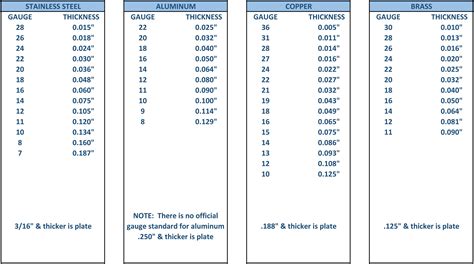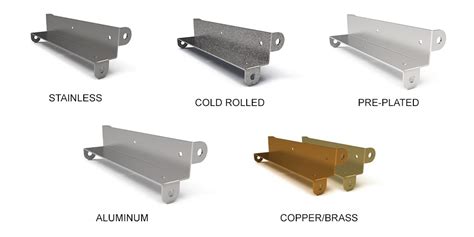all about sheet metal In this article, we’ll give you the lowdown on sheet metal forming, including the various processes, suitable materials, and its pros and cons. What is Sheet Metal Forming? Also known as sheet metal fabrication, sheet metal . See MISCELLANEOUS STANDARDS section in the list for all additional standard sheets required. Culvert standards are available for cast-in-place and precast boxes (both single box and multi-box). Standards for wingwalls and safety .
0 · which thickness called sheet metal
1 · types of sheet metal material
2 · types of sheet metal fabrication
3 · metal sheet thickness in mm
4 · maximum thickness of sheet metal
5 · disadvantages of sheet metal
6 · different types of sheet metals
7 · characteristics of sheet metal
Continuously hinged cover is secured with stainless steel clamps and plated steel screws. Seamless poured-in place gasket. Models larger than 4" x 4" include a removable 14 gauge inner panel.

In this article, we’ll give you the lowdown on sheet metal forming, including the various processes, suitable materials, and its pros and cons. What is Sheet Metal Forming? Also known as sheet metal fabrication, sheet metal .Sheet metal is metal formed into thin, flat pieces, usually by an industrial process. Thicknesses can vary significantly; extremely thin sheets are considered foil or leaf, and pieces thicker than 6 mm (0.25 in) are considered plate, such as plate steel, a class of structural steel. Sheet metal is available in flat pieces or coiled strips. The coils are formed by . In this article, we’ll give you the lowdown on sheet metal forming, including the various processes, suitable materials, and its pros and cons. What is Sheet Metal Forming? Also known as sheet metal fabrication, sheet metal forming uses metal sheets to make various products and components.Sheet metal is metal formed into thin, flat pieces, usually by an industrial process. Thicknesses can vary significantly; extremely thin sheets are considered foil or leaf, and pieces thicker than 6 mm (0.25 in) are considered plate, such as plate steel, a class of structural steel. Sheet metal is available in flat pieces or coiled strips.
This article will explore in detail what materials can be formed into sheet metal, sheet metal geometries, the most common sheet metal part-forming processes, and their applications. Why Can Some Metals Be Formed In Sheets and Others Cannot? In this article, you will learn about 9 different types of Sheet Metal Operations with diagrams and you can also download the pdf file of this post. Sheet metal is metal that has been formed into thin, flat pieces, usually through an industrial process. It is generally produced in sheets less than 6 mm thick. Sheet metal is one of the fundamental forms used in metalworking, and it . Sheet metal is the basis of all engineering today. We can see it everywhere – from cars and machinery to house facades and furniture. To utilise sheet metal to its full extent, engineers should first know a thing or two about it. This includes standard measurements, materials, differences in manufacturing and possible forming methods.
Sheet metal is metal formed into thin, flat pieces, usually by an industrial process. Thicknesses can vary significantly; extremely thin sheets are considered foil or leaf, and pieces thicker than 6 mm (0.25 in) are considered plate, such as plate steel, a class of structural steel.In this article, we’ll explore the nine vital steps in sheet metal fabrication, providing valuable insights for businesses and industry professionals. Keep reading into the fascinating world of metal transformation.
which thickness called sheet metal
Sheet metal, to state the obvious, is metal that has been transformed into sheet form, like a sheet of plywood or a sheet of drywall. Many people equate the term “sheet metal” with the silvery or spangly-looking metal one might see as part of their household duct work.In this article, we will discuss sheet metal materials, their advantages, and their limitations. We can divide the Sheet metal material selection into the following two sections. Sheet metal material selection is an iterative process. After the material selection, it should be validated and tested according to the product design requirements. In this article, we’ll give you the lowdown on sheet metal forming, including the various processes, suitable materials, and its pros and cons. What is Sheet Metal Forming? Also known as sheet metal fabrication, sheet metal forming uses metal sheets to make various products and components.Sheet metal is metal formed into thin, flat pieces, usually by an industrial process. Thicknesses can vary significantly; extremely thin sheets are considered foil or leaf, and pieces thicker than 6 mm (0.25 in) are considered plate, such as plate steel, a class of structural steel. Sheet metal is available in flat pieces or coiled strips.
This article will explore in detail what materials can be formed into sheet metal, sheet metal geometries, the most common sheet metal part-forming processes, and their applications. Why Can Some Metals Be Formed In Sheets and Others Cannot? In this article, you will learn about 9 different types of Sheet Metal Operations with diagrams and you can also download the pdf file of this post.
Sheet metal is metal that has been formed into thin, flat pieces, usually through an industrial process. It is generally produced in sheets less than 6 mm thick. Sheet metal is one of the fundamental forms used in metalworking, and it . Sheet metal is the basis of all engineering today. We can see it everywhere – from cars and machinery to house facades and furniture. To utilise sheet metal to its full extent, engineers should first know a thing or two about it. This includes standard measurements, materials, differences in manufacturing and possible forming methods.Sheet metal is metal formed into thin, flat pieces, usually by an industrial process. Thicknesses can vary significantly; extremely thin sheets are considered foil or leaf, and pieces thicker than 6 mm (0.25 in) are considered plate, such as plate steel, a class of structural steel.
In this article, we’ll explore the nine vital steps in sheet metal fabrication, providing valuable insights for businesses and industry professionals. Keep reading into the fascinating world of metal transformation. Sheet metal, to state the obvious, is metal that has been transformed into sheet form, like a sheet of plywood or a sheet of drywall. Many people equate the term “sheet metal” with the silvery or spangly-looking metal one might see as part of their household duct work.
types of sheet metal material

types of sheet metal fabrication
metal sheet thickness in mm
Twist lock receptacle for mounting in junction box. 20A 230V.
all about sheet metal|disadvantages of sheet metal